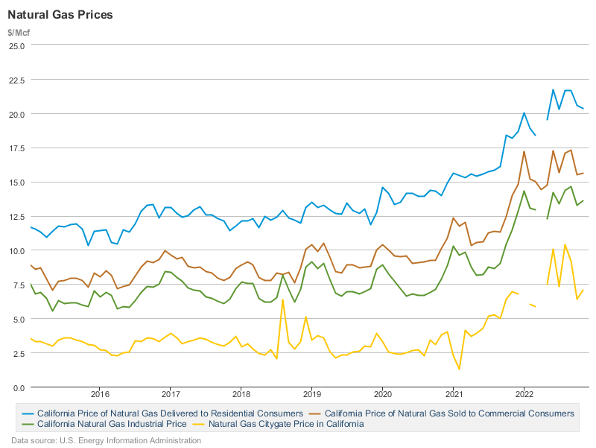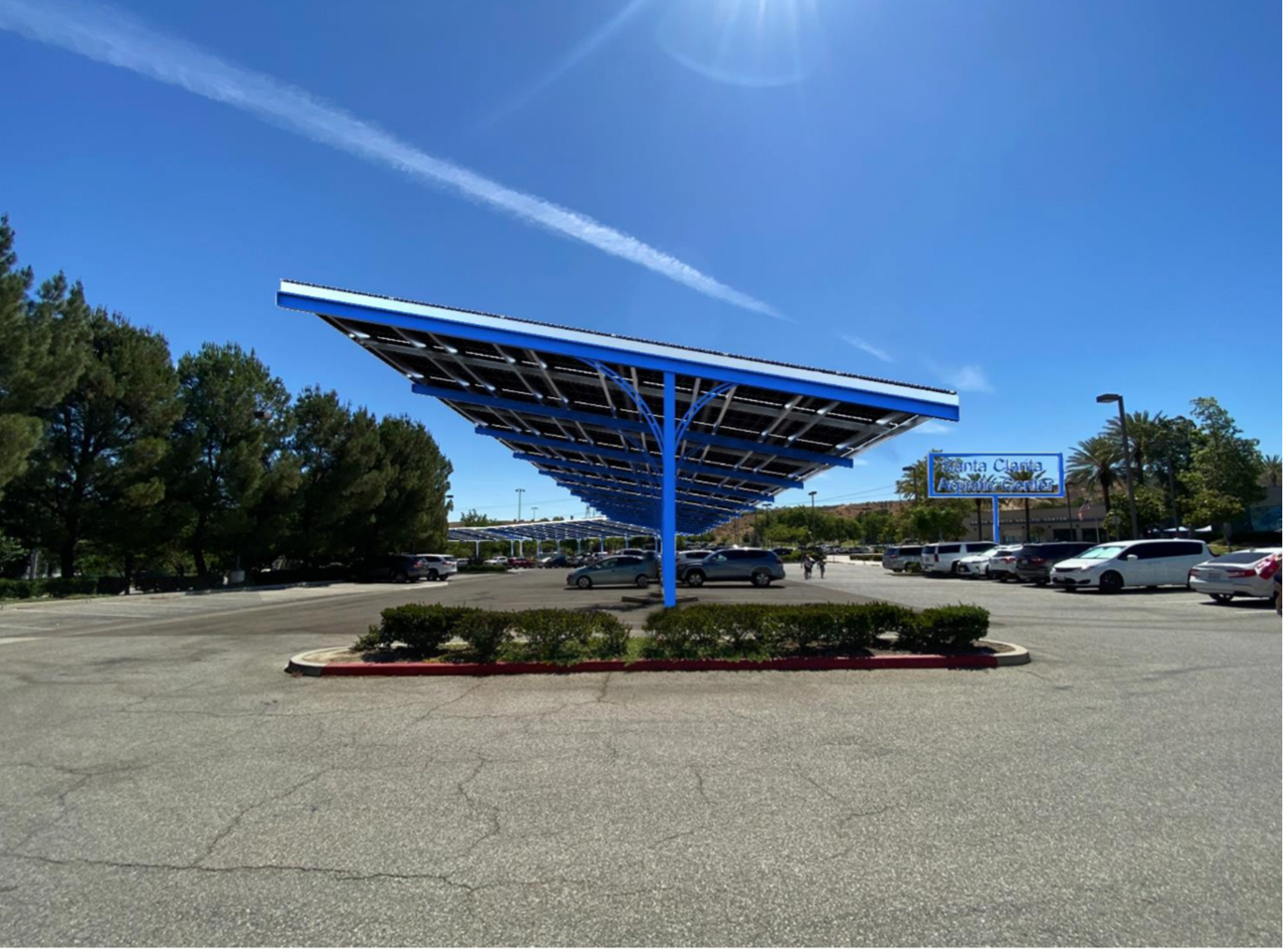 Inflation and spiraling costs have impacted us all. The price of gasoline, the cost of eggs, bacon and most other basic needs for food and transportation have exploded in the last few years. To combat these inflationary pressures, employees, unions and workers across all industries are expecting needed salary increases just to commute to work and put food on the table. Combined with all the negative hangover effects from the COVID pandemic, many municipalities are wondering, “What can we focus on in 2023 to make some positive impacts and get a WIN?”
Inflation and spiraling costs have impacted us all. The price of gasoline, the cost of eggs, bacon and most other basic needs for food and transportation have exploded in the last few years. To combat these inflationary pressures, employees, unions and workers across all industries are expecting needed salary increases just to commute to work and put food on the table. Combined with all the negative hangover effects from the COVID pandemic, many municipalities are wondering, “What can we focus on in 2023 to make some positive impacts and get a WIN?”
One of the major budget line items for most municipal governments (often just behind salaries and pensions) are their electricity and natural gas payments. Not a surprise to any CFO: utility increases in California have shot up dramatically in the last few years. All Investor-Owned Utilities (IOUs), such as Southern California Edison (SCE), Pacific Gas and Electric (PG&E) and San Diego Gas & Electric (SDGE) have seen commercial electricity rate increases skyrocket. In 2022, SCE increased by 40% and PG&E increased by 24% while SDGE increased by 27% in 2021 and another 4.3% in 2022. The chart below shows residential rate increases from 2016-2022, with commercial rates, having had a similar trajectory.

Source: Jennifer Dowdell of TURN (The Utility Reform Network) at the California Public Utilities Commission (CPUC), 2022
Most recently, electricity rates at IOUs have risen far faster than inflation. Many experts believe that with the mandated transition to more renewable energy production, plus the move to the “electrification” of vehicles and HVAC equipment, the significant upward trend in utility rate increases will continue well into the future. Even as current rates rise by five times more than average growth, IOUs are slated to continue the upward trajectory on costs. Imagine your total utility bill doubling in the next three years.
PG&E has already proposed additional rate increases of up to 25% starting in 2023 for commercial, industrial and agricultural customers. Sempra Energy, the parent company of SDGE, is paying its investors the highest profits recorded, funded by ratepayers who face one of the highest per-unit electricity prices in the county. These are just the facts.
It is easy to simply just focus on electric price increases, but with current US energy policies and global market dynamics, natural gas prices have risen at an even faster pace than electricity with SoCal Gas customers experiencing an increase of more than 300% since January 2022.

Source: US Energy Information Administration, 2022
If you are a city manager or city council member, what can you do to blunt these massive utility cost increases? Doing nothing or hoping the problem will go away is not a strategy. Some of the leading cities across California, including the City of Ontario, the City of Santa Clarita, the City of San Leandro and the City of Fountain Valley, offer excellent examples of how to proactively combat the impact of rising utility costs with investments in modernization, efficiency and sustainability.
The City of Santa Clarita, for example, recently approved a citywide program to promote building and infrastructure efficiency, renewable energy generation and park revitalization. The program will generate over $46.6 million in savings for the City’s operating and capital budgets–including $5.2 million in inflation savings for capital projects–while reducing greenhouse gas emissions (GHG) by 3,322 metric tons per year. Countless other examples exist of cities embarking on comprehensive programs like Santa Clarita’s, with the same notable and documented positive outcomes for other cities:
- Fountain Valley boasts program lifecycle savings of approximately $13.2 million and a reduction of GHG emissions by about 1,833 metric tons
- Ontario’s savings approach approximately $75 million while GHG emissions drop 8,878 metric tons
- San Leandro shows $37.3 million in general fund relief with a reduction of a whopping 25,033 metric tons
Most municipalities have contemplated energy and sustainability initiatives for years, but the required upfront capital, staff resource constraints, stakeholder coordination and complex analysis makes it hard to get projects off the ground. Cities may take several approaches, but there is one approach that is proven to be the most effective for getting projects completed in less time, with fewer resources and with lower risk.
Compared to “piecemealing” projects one at a time or waiting for equipment to break down, a design/build energy services approach allows a city to look at energy holistically and through the lens of the long term. Bundling all pieces of the puzzle together, rather than implementing one or two at a time, addresses deferred maintenance needs, as well as resiliency and sustainability goals. What’s more, is the legislative availability of streamlined procurement options available, which make it easy to competitively procure a single point of accountability without hiring multiple consulting firms and incurring all the incremental costs and delays associated with a traditional 4-5 year+ construction/retrofit process.
If energy efficiency and sustainability (plus blunting budget-busting utility increases) are on your to-do list and you are looking for some reasons to prioritize energy infrastructure projects in 2023, read on:
FIVE REASONS TO ACT NOW
- PRICE & TIMELINE CERTAINTY
According to CBRE, construction cost escalations have seen double digit increases for the last two years and are anticipated to escalate at higher than pre-pandemic norms into 2023. If your city has constructed any facilities or has done any significant construction projects recently, you know firsthand the risks, delays, budget overruns, litigation, etc., that can result.
Not to mention the other delays created by supply chain disturbances, with many components often taking up to 12 months to arrive. The combined impact of inflation and delays are costing billions, forcing many cities to defer decision making or cancel projects altogether. By the time projects are ready to be pursued, it’s common for cities to see projects costing 1.5-2 times more than was originally budgeted in years prior.
Acting NOW, with a streamlined design/build approach, puts you in the driver’s seat and ensures you can lock down–and stand behind–the budgets and timelines you promise to stakeholders.
- GRANTS, INCENTIVES, REBATES
More funding is available today from grants, incentives and rebates than ever before. Ranging from federal, state, local and private sector programs, municipalities have a chance to free up or stretch the impact of capital funds without taking on any debt. Finding a partner who has deep expertise in helping your city secure incremental funds is imperative. The money is out there.
In addition to the billions in ARPA stimulus cities must obligate before December 2024, you can now also tap into an additional $370 billion from the Inflation Reduction Act (IRA) for clean energy generation, efficiency measures, improvements to water/wastewater facilities and EV charging infrastructure. IRA funds can help fund approximately one-third of the cost of solar for your city with direct payment tax incentives. Lighting, HVAC, battery storage and many other types of “electrification” also qualify for potential grants.
- EFFICIENCY – STILL YIELDS MUCH LOW-HANGING FRUIT
It’s common for cities to think they’ve done all the low-hanging fruit there is to do if you have completed a few efficiency upgrades over the last decade. Even in relatively new facilities or buildings that meet LEED standards, run times and automation settings often get modified or overridden with time. Plus, technology improvements and Title 24 building code standards have changed drastically in just the last few years, particularly when it comes to ventilation standards or the electrification of natural gas-consuming equipment.
By optimizing your current infrastructure to run more efficiently and replacing outdated equipment with technology that meets today’s standards by investing in smart building technology, you can reduce the utility consumption of your existing facilities by anywhere from 30%-40% or more.
- PIECEMEAL & BREAKDOWN APPROACHES DON’T WORK
When it comes to energy, piecemeal approaches or waiting for things to break leads to unintended consequences with a variety of negative impacts, including staff resource strain, comfort and productivity issues, emergency repair cost, etc. Furthermore, the stacking order for pursuing building efficiency and renewable energy projects is critically important to avoid alternative energy system oversizing, another common pitfall of a piecemeal approach.
Having a single point of accountability for the energy analysis, design, implementation and overall savings assurance gets your projects off the ground without the risks of budget overruns and delays. A comprehensive approach also allows you to reduce the load of your facilities first and then properly size solar energy and storage solutions to precisely meet the needs of your now more efficient facilities. The technology to achieve Zero-Net Energy and Carbon Neutrality is available today, however, these ambitious goals can only be achieved with a well-planned, comprehensive perspective.
- NET ENERGY METERING RULE CHANGES
Net Energy Metering (NEM) rules determine how much the utilities pay your city when solar produces more power than you use and how you can use solar to help offset skyrocketing electric bills. These rules change every few years and reduce the overall financial benefits of installing solar. If you are already considering solar, the time to act is NOW to take advantage of NEM 2.0 grandfathering and increased savings before NEM 3.0 goes into effect on April 15, 2023.
As utility rates go up, solar will continue to make financial sense under NEM 3.0, albeit with fewer savings, particularly when combined with energy storage solutions. Don’t be discouraged if you’re not ready to act on solar quite yet.
With all the diverse and long-term challenges pressing down on city managers today (homelessness, crime, traffic congestion, worker/labor shortages, affordable housing and other state mandates), it would be easy to become overwhelmed and discouraged. Luckily, you don’t have to reinvent the wheel or take ten years when it comes to pursuing energy efficiency, sustainability and infrastructure investments.
Find a city that has had success with a comprehensive energy program and ask them about their process. Ask for a sample RFP and adapt the document for your needs. Once you drive a competitive process, select a design/build partner and conduct a citywide assessment. You will then have the tools and data to align a scope of work and funding plan specifically targeting your stakeholder and city needs. Before proceeding with program implementation, you’ll be equipped with a whole picture perspective to make intelligent long-term decisions that best serve your city’s interest today, tomorrow and for the next twenty years. Act NOW, and you can capture a big WIN in the next year or two for your city, while striving to address the numerous other longer term challenges city leaders face today.
Author: Thomas Jackson is Corporate Vice President for Sales & Major Projects for Climatec Energy Services. He holds a degree in Energy Resource Management & currently serves on the Board of Advisors for Sustainability & Technology at Eastern Illinois University. Climatec is a wholly owned LLC as part of the Robert BOSCH family of companies.






